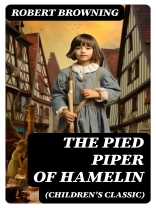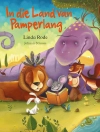In ‘The Pied Piper of Hamelin, ‘ Robert Browning masterfully weaves a captivating narrative poem that explores themes of morality, consequence, and the power of storytelling. Written in a rhythmic and lyrical style, Browning employs vivid imagery and expressive language to depict the tale of a mystical piper who lures away the town’s children in retaliation for their parents’ neglect. This timeless children’s classic is a rich reflection of the Victorian era’s fascination with folklore and moral lessons, making it a quintessential work that transcends generations. Robert Browning, a celebrated Victorian poet, is renowned for his dramatic monologues and deep psychological insights. His diverse artistic influences, from medieval tales to the Romantic poets, shaped his approach to storytelling. ‘The Pied Piper of Hamelin’ was inspired by an ancient German legend, which Browning adapted with his distinctive poetic flair, infusing the narrative with both depth and emotion. Browning’s nuanced portrayal of characters invites readers to contemplate broader societal issues, shedding light on human nature. This enchanting tale is highly recommended for readers of all ages. Its rich narrative invites not only children but also adults to reflect on themes of trust and betrayal, making it a perfect piece for family reading or educational settings. Immerse yourself in Browning’s lyrical world and let the story of the Pied Piper resonate with you, fostering a love for poetry and its power to convey essential truths.
เกี่ยวกับผู้แต่ง
Robert Browning (1812-1889) was an eminent English poet and playwright, renowned for his mastery in dramatic monologue, a form which he significantly developed. His work showcases deep psychological portraitures and complex character studies in narrative poetry. Born in Camberwell, London, Browning had a relatively privileged upbringing, which allowed him to pursue his literary interests. In 1868-1869, Browning achieved a career peak with the publication of ‘The Ring and the Book, ‘ a lengthy dramatic narrative that solidified his reputation. Apart from his adult-oriented poetry, Browning ventured into writing for children. ‘The Pied Piper of Hamelin, ‘ classified as a children’s classic, draws on a medieval legend and demonstrates Browning’s adept storytelling and rhythmic skill, characteristic of his more mature works. Through his innovative use of dramatic monologue, Browning delves into the complexities of human nature, a theme that recurs throughout his oeuvre, including his other notable works like ‘Men and Women’ and ‘Dramatis Personae.’ His literary contributions provided a bridge between the more restrained Victorian verse and the Modern poetry of the succeeding century. Browning’s influence can be seen in the works of modern poets and his unconventional use of linguistic rhythm, diction, and symbolism in his poems continues to be a subject of academic study in literature courses worldwide.












